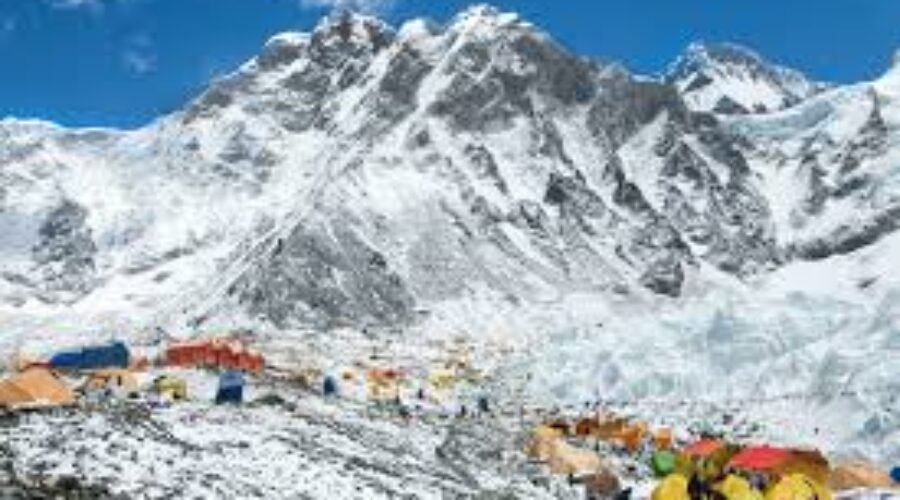Experience In The SpotlightTrekking in the Himalayas: A Guide to Everest Base Camp and BeyondExperience In The Spotlight
Nepal, a land of towering peaks and breathtaking landscapes, offers some of the world’s most iconic trekking experiences. Among these, the trek to Everest Base Camp (EBC) stands as a bucket-list adventure for trekkers worldwide. Whether you’re a seasoned hiker or a first-time adventurer, this guide will help you prepare for the journey of a lifetime.
Why Trek to Everest Base Camp?
Everest Base Camp is more than just a destination; it’s a journey into the heart of the Himalayas. The trek offers unparalleled views of Mount Everest (8,848.86 meters) and other majestic peaks like Lhotse, Nuptse, and Ama Dablam. Along the way, you’ll experience:
- Rich Sherpa Culture: Visit vibrant villages like Namche Bazaar and Tengboche, and immerse yourself in the traditions of the Sherpa people.
- Stunning Landscapes: Traverse through lush forests, rugged trails, and glacial moraines.
- Spiritual Serenity: Explore monasteries and prayer flags fluttering in the Himalayan breeze, reflecting the deep spirituality of the region.
When to Go
The best time to trek to EBC is during the pre-monsoon (March to May) and post-monsoon (September to November) seasons. These months offer clear skies, moderate temperatures, and stable weather conditions.
The Trekking Route
The classic EBC trek typically takes 12-14 days, covering around 130 kilometers round trip. Here’s a day-by-day outline:
- Day 1: Fly from Kathmandu to Lukla (2,860m) and trek to Phakding (2,610m).
- Day 2: Trek to Namche Bazaar (3,440m).
- Day 3: Acclimatization day at Namche Bazaar.
- Day 4: Trek to Tengboche (3,860m).
- Day 5: Trek to Dingboche (4,410m).
- Day 6: Acclimatization day at Dingboche.
- Day 7: Trek to Lobuche (4,940m).
- Day 8: Trek to Gorak Shep (5,164m) and visit Everest Base Camp (5,364m).
- Day 9: Climb Kala Patthar (5,545m) for sunrise views and return to Pheriche (4,371m).
- Days 10-12: Retrace your steps back to Lukla and fly to Kathmandu.
Preparation and Gear
Physical Fitness
Trekking to EBC is challenging but achievable with proper preparation. Focus on building:
- Cardiovascular Endurance: Activities like running, swimming, or cycling.
- Strength Training: Especially for legs and core muscles.
- Acclimatization: Spend time at high altitudes if possible before the trek.
Essential Gear
Pack wisely to ensure comfort and safety. Key items include:
- Clothing: Layered clothing for varying temperatures.
- Footwear: High-quality trekking boots, broken in beforehand.
- Backpack: A durable, lightweight backpack with a rain cover.
- Accessories: Trekking poles, a good sleeping bag, and a headlamp.
- Health Essentials: First aid kit, altitude sickness medication, and water purification tablets.
Challenges and Tips
- Altitude Sickness: Acclimatize properly and stay hydrated to minimize risks.
- Weather Fluctuations: Be prepared for sudden changes in weather conditions.
- Permits and Guides: Obtain the necessary permits (TIMS and Sagarmatha National Park Entry). Hiring a guide or porter can enhance your experience.
Beyond Everest Base Camp
For those seeking further adventures, consider these options:
- Gokyo Lakes Trek: Explore stunning glacial lakes and cross the Cho La Pass.
- Three Passes Trek: A challenging route that includes Renjo La, Cho La, and Kongma La passes.
- Island Peak Climb: A popular trekking peak for aspiring mountaineers.
Conclusion
The trek to Everest Base Camp is a transformative experience that combines natural beauty, cultural richness, and personal achievement. With careful planning and the right mindset, you can embark on a journey that will leave you with memories to last a lifetime. So, pack your bags, lace up your boots, and get ready to conquer the trails of the Himalayas!



